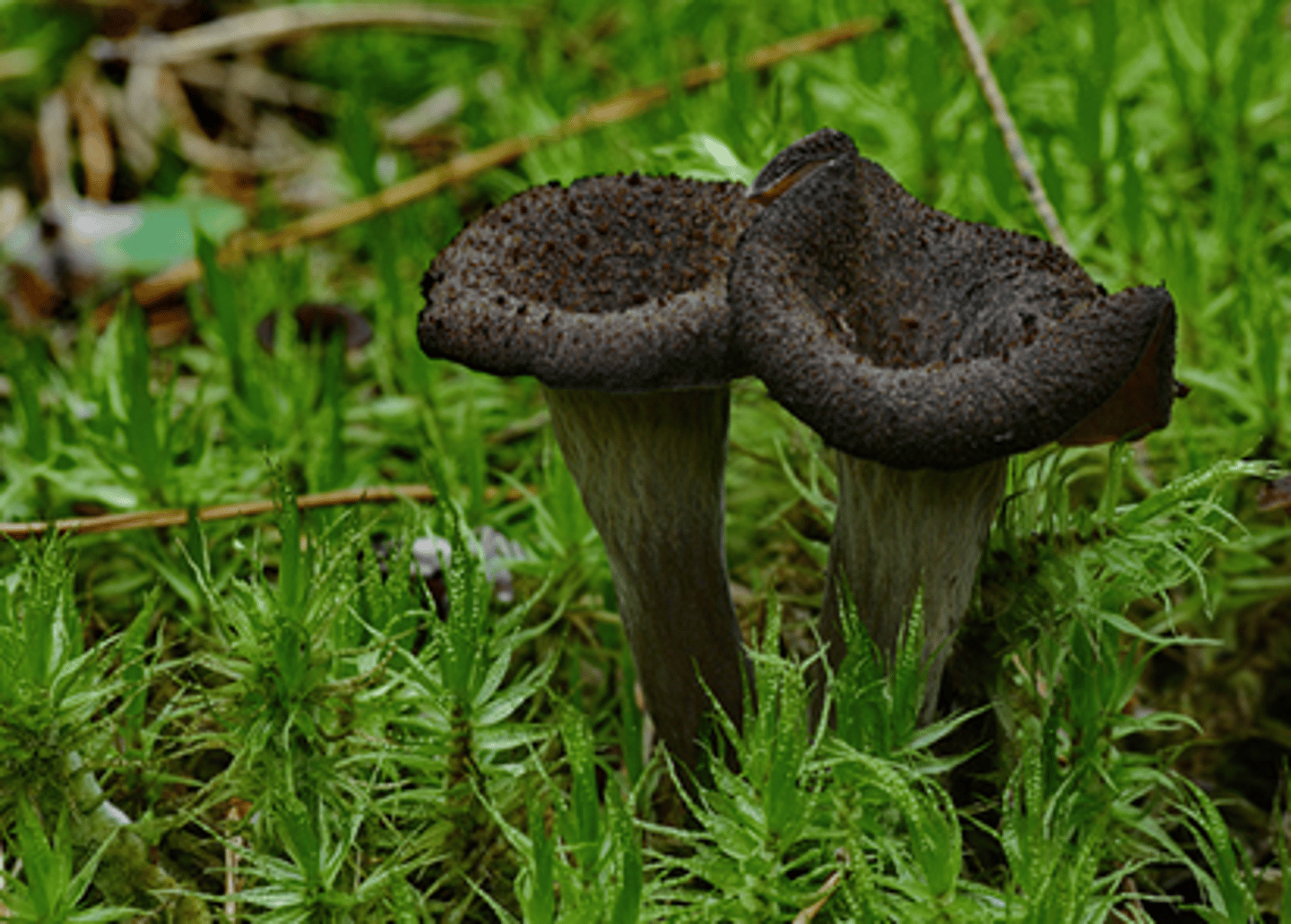CLASSIFICATIONS OF TRADITIONAL AFRICAN MUSICAL INSTRUMENTS
1/17
There's no tags or description
Looks like no tags are added yet.
Name | Mastery | Learn | Test | Matching | Spaced |
|---|
No study sessions yet.
18 Terms
The resonator bow
is a form of the mouth bow with a calabash resonator attached at its mid-point. In different parts of Africa, this bow is known by other names. In Rwanda, it is known as munahi; in Dahomey, tiepore; and in Madagascar, jejolava.
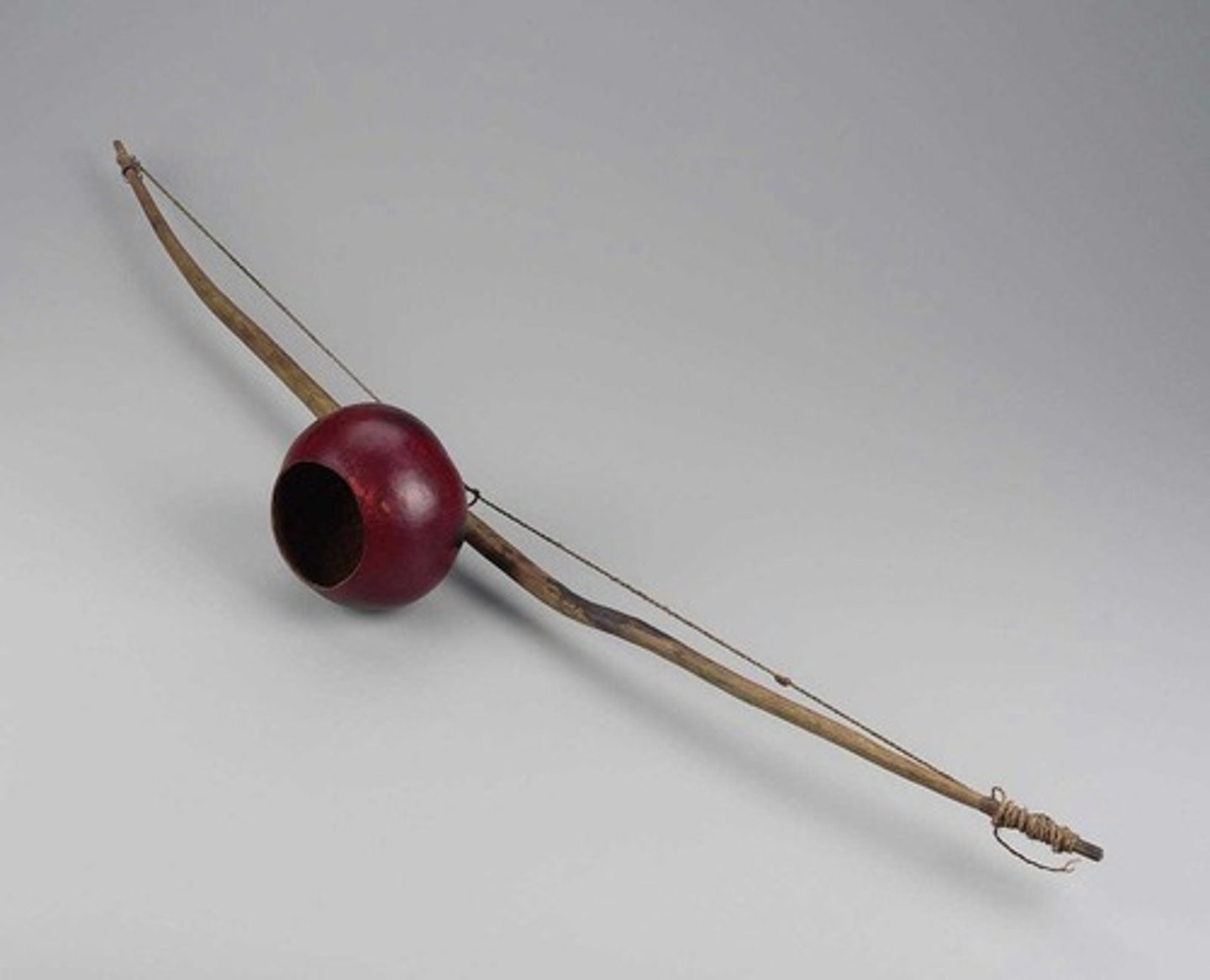
Calabash/gourd resonator
gourds are used as resonators, trapping and releasing air to change both the volume and resonance of the instrument.
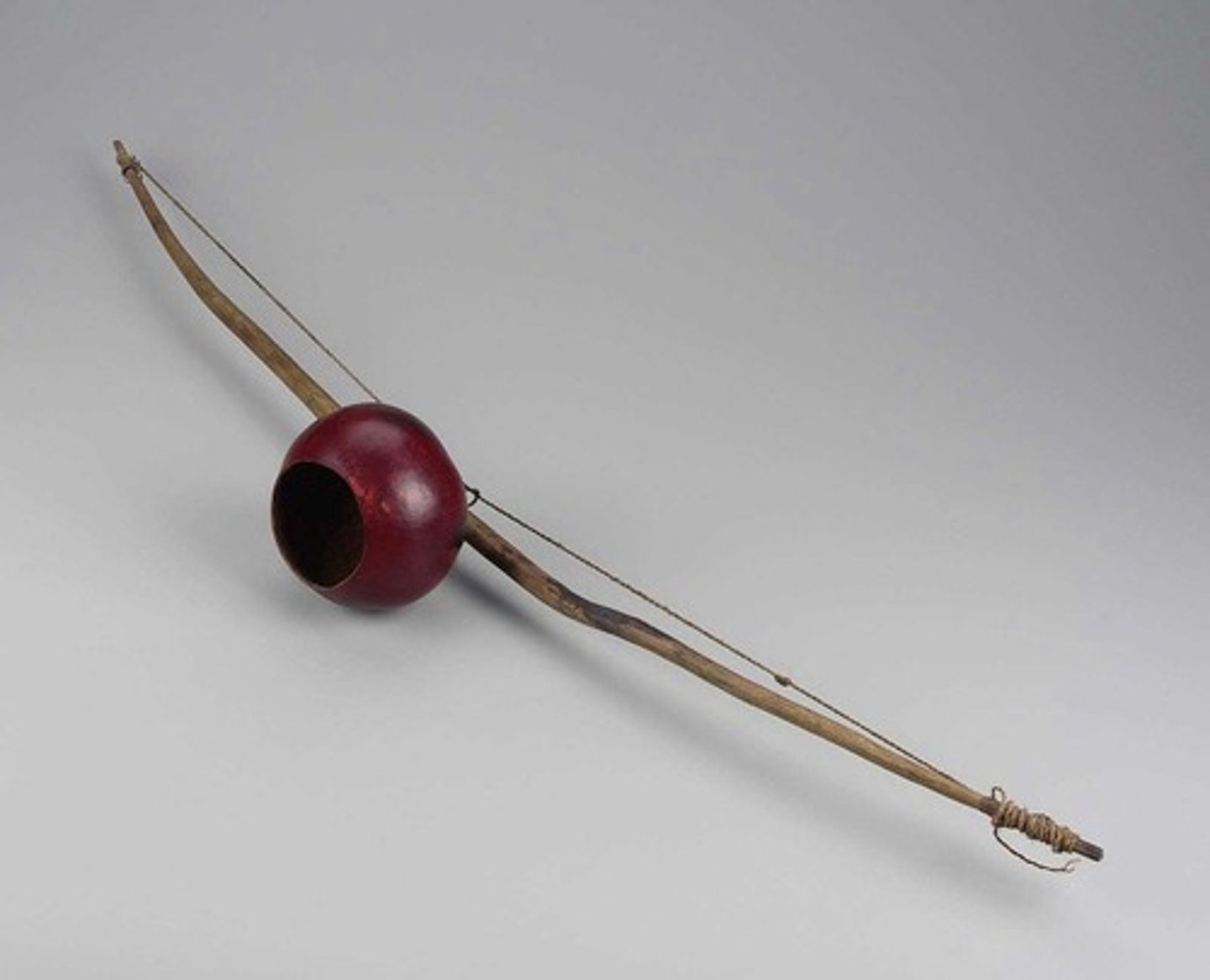
The zither
is a stringed instrument with sizes and shapes whose strings are stretched along its body.
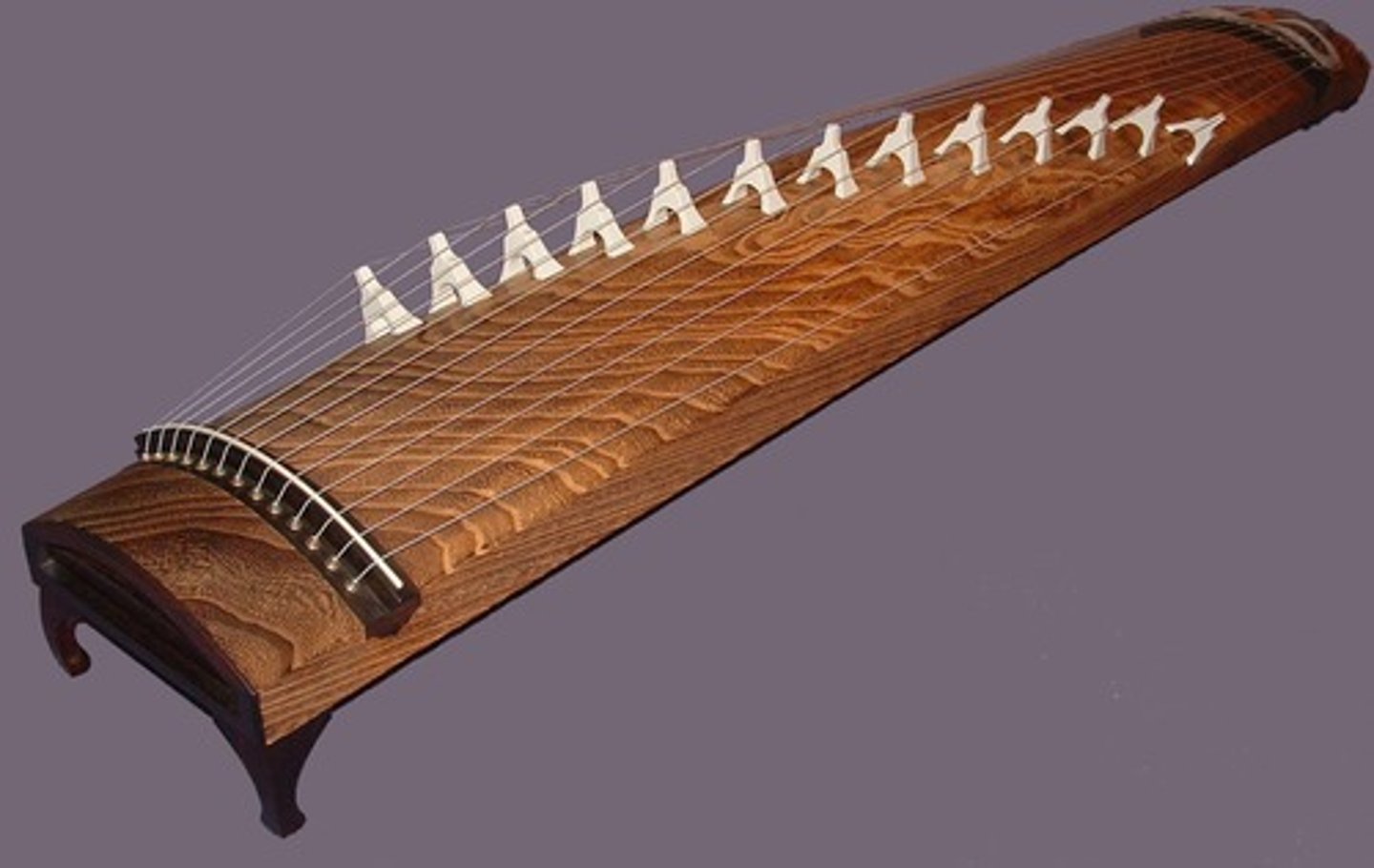
Chordophones
are instruments which produce sounds from the vibration of strings. These include bows, harps, lutes, zithers, and lyres of various sizes.
musical bow
is the ancestor of all string instruments. It is the oldest and one of the most widely-used string instruments of Africa. The principal types are the mouth bow, the resonator bow, and the earth bow.
The mouth bow
consists of a single string attached
to each end of a curved stick, similar to a bow and arrow. The string is held in the mouth and the string is either plucked or struck with another stick, producing a percussive yet delicate sound.

The earth bow
-also called ground bow or pit harp-consists of a flexible pole which is planted in the ground. A string is attached to one end of the pole, while the other end of the string is attached to a stone, a piece of bark, or a small piece of wood which is then planted in a hole dug in the ground, thus bending the pole. The hole in the ground acts as a resonator and the sound comes from under the earth. This type of bow is often used in ceremonies involving magic.
The lute
originating from the Arabic states, is shaped like the modern guitar and played in similar fashion. It has a resonating body, a neck, and one or more strings which stretch across the length of its body and neck. The player tunes the strings by tightening or loosening the pegs at the top of the lute's neck. West African plucked lutes include the konting, khalam, and the nkoni.

The kora
is Africa's most sophisticated harp, while also having features similar to a lute. Its body is made from a gourd or calabash. A support for the bridge is set across the opening and covered with a skin that is held in place with studs. The leather rings around the neck are used to tighten the 21 strings that give the instrument a range of over three octaves.
is held upright and played with the fingers.
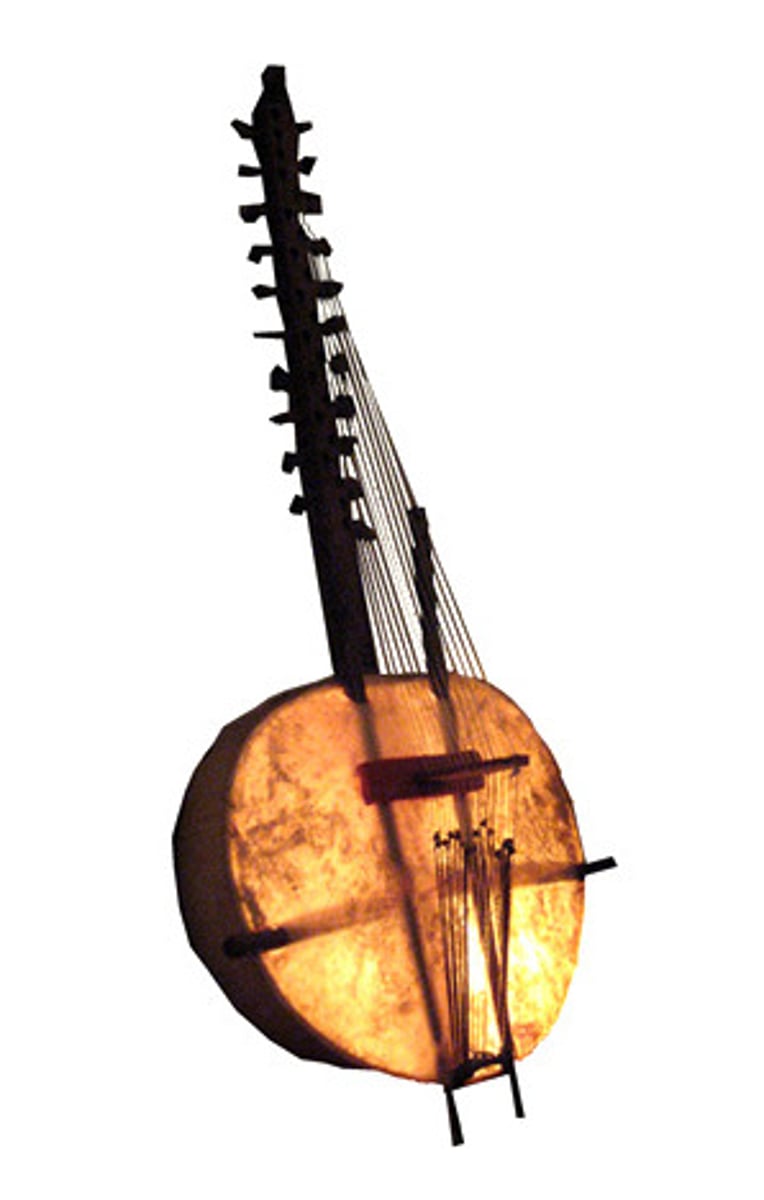
zeze
is a fiddle from Sub-Saharan Africa played with a bow, a small wooden stick, or plucked with the fingers. It has one or two strings, made of steel or bicycle brake wire. It is also known by the names tzetze or dzendze, izeze and endingidi; and in Madagascar it is called lokanga voutavo

Aerophones
are musical instruments that produce sound primarily by trapping or enclosing a body or column of air and causing it to vibrate. The air vibrates without the use of strings or membranes, and without the vibration of the instrument itself thus adding to the quality of sound produced. Flutes in various sizes and shapes, panpipes, horns, whistles, gourd and shell megaphones, and animal horn and wooden trumpets fall under this category.
Flutes
are widely used throughout Africa. They are usually fashioned from a single tube closed at one end and blown, while being held either vertically or side-blown. Atenteben is a bamboo flute from Ghana. It is played vertically like the European recorder. Fulani is the traditional flute of the Fulani people. It is also known as fula or tambin which is the traditional Fulani flute of the Fouta Djalon highlands of Guinea.
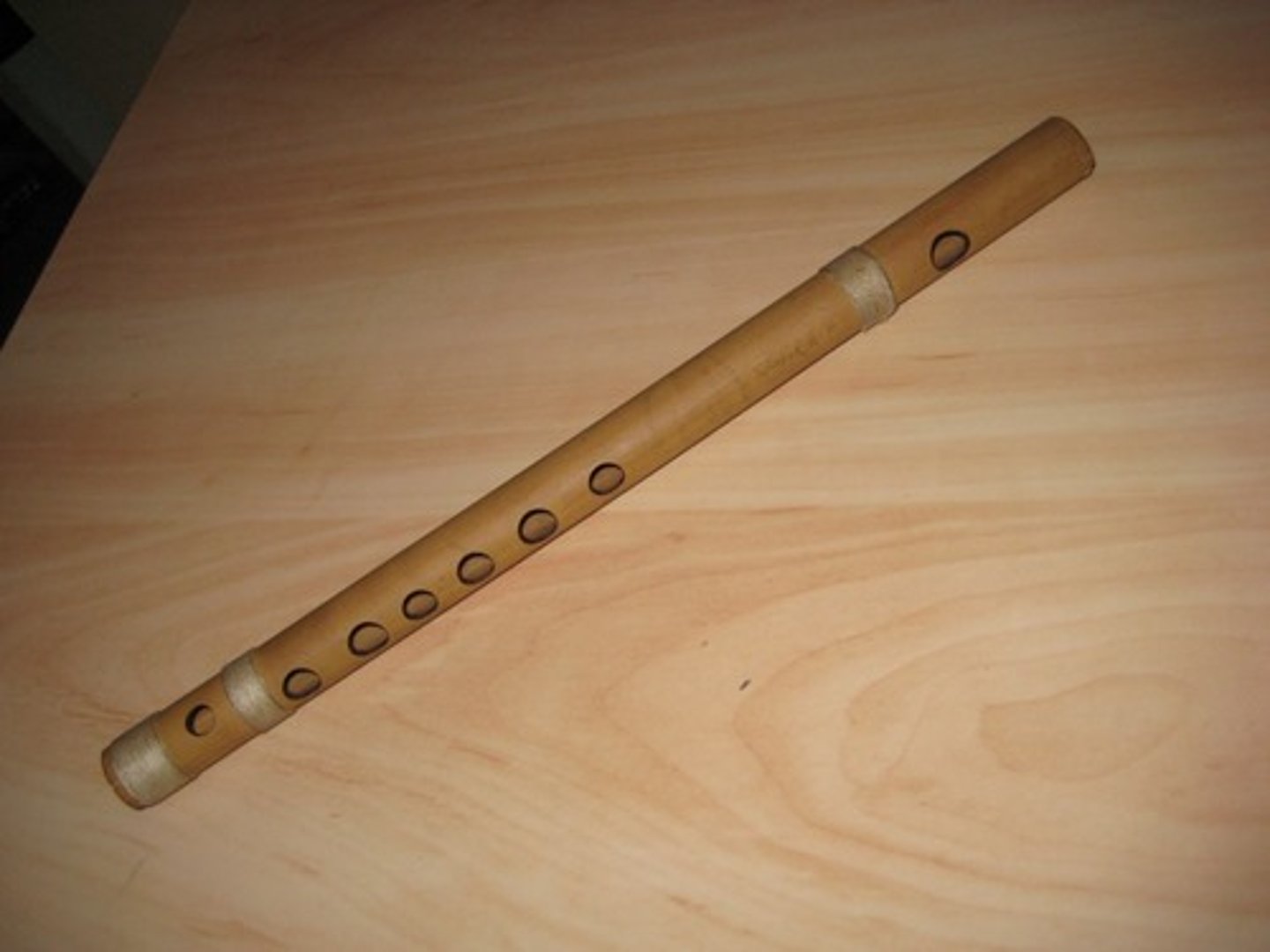
Panpipes
-consist of cane pipes of different lengths tied in a row or in a bundle held together by wax or a cord, and generally closed at the bottom. They are blown across the top, each producing a different note.
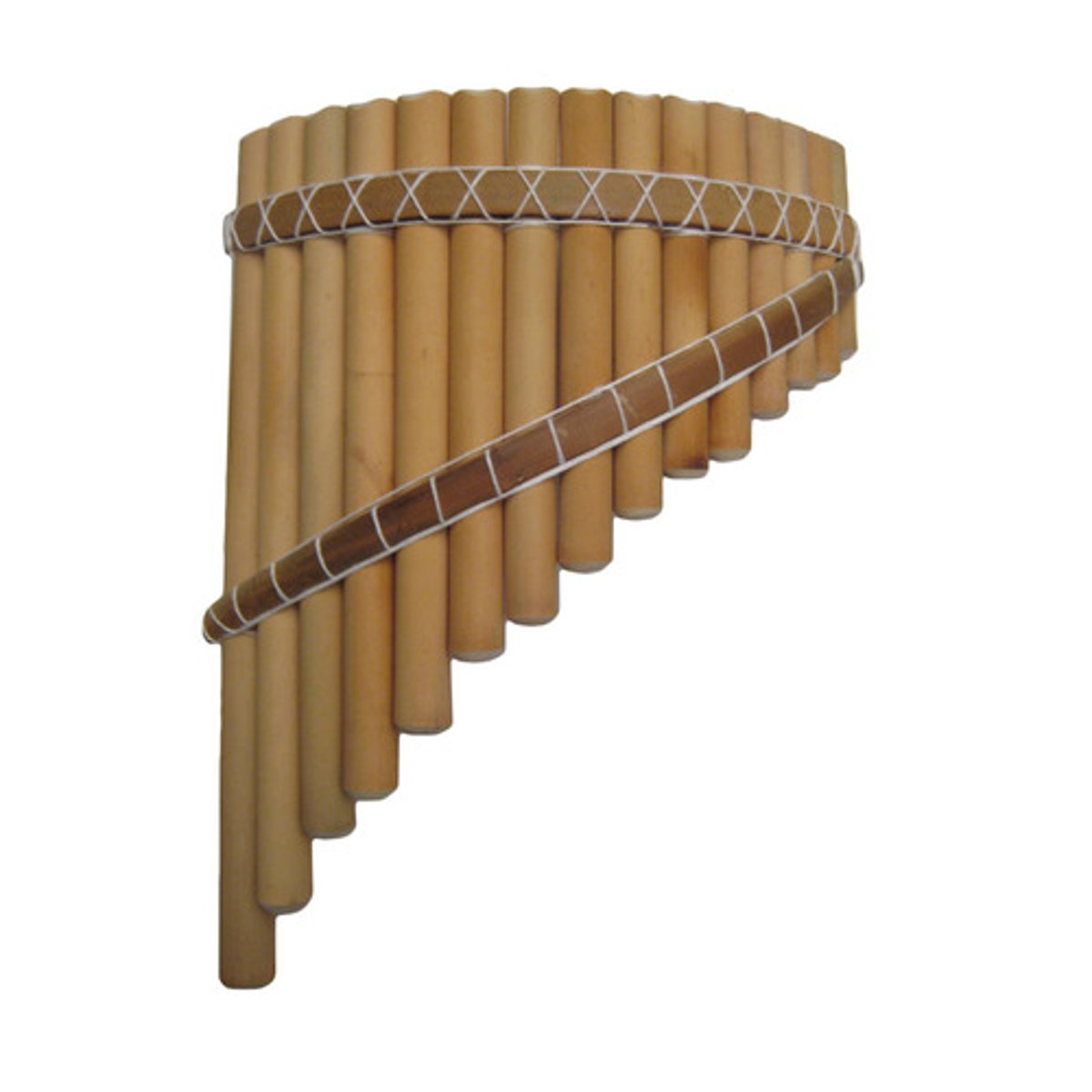
Horns and trumpets
are found almost everywhere in Africa, and are commonly made from elephant tusks and animal horns. With their varied attractive shapes, these instruments may be either end-blown or side-blown. They vary in range and size from the small signal whistle of the southern cattle herders to the large ivory horns of the tribal chiefs of the interior. The wooden trumpet may be simple or artistically carved, sometimes resembling a crocodile's head.
Kudu horn
- This is one type of horn made from the horn of the kudu antelope. It releases a mellow and warm sound that adds a unique African accent to the music.
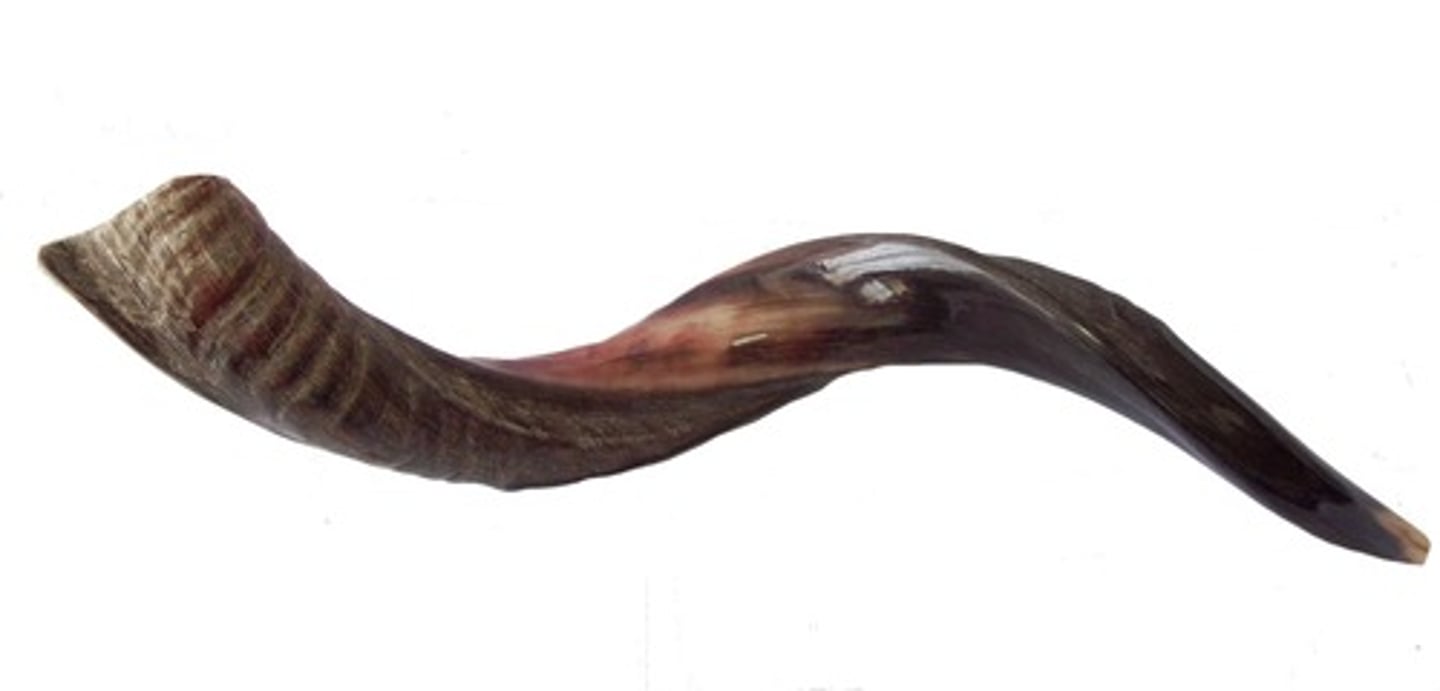
Reed pipe
- These are single-reed pipes made from hollow guinea corn or sorghum stems, where the reed is a flap partially cut from the stem near one end. It is the vibration of this reed that causes the air within the hollow instrument to create the sound.
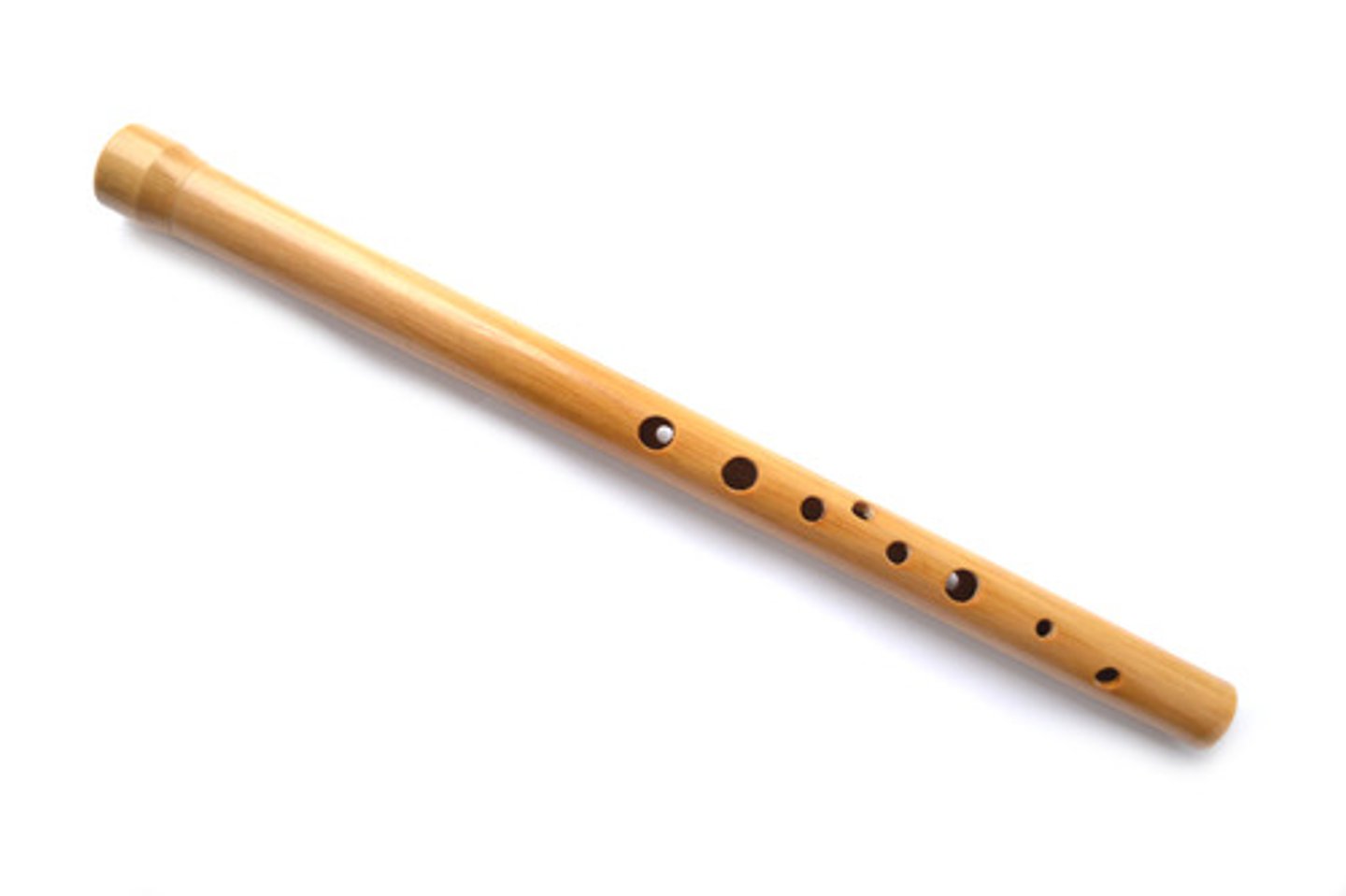
Whistles
are found throughout the continent and may be made of wood or other materials. Short pieces of horn serve as whistles, often with a short tube inserted into the mouthpiece. Clay can be molded into whistles of many shapes and forms and then baked. Pottery whistles are sometimes shaped in the form of a head, similar to the Aztec whistles of Central America and Mexico.

Trumpets
-African trumpets are made of wood, metal, animal horns, elephant tusks, and gourds, ornamented with snake or crocodile skin or the hide of zebras, leopards, and other animals.
